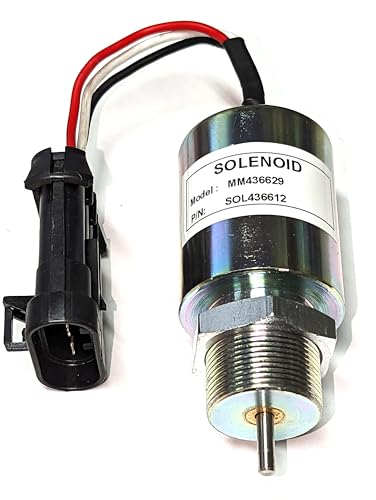
When working on electrical systems, it’s important to know how to safely remove and replace components. One common component is the spade terminal, which is used to connect wires to various electrical devices. However, sometimes these terminals can become stuck or difficult to remove.
In this article, we will guide you through the process of removing a spade terminal with a catch. This type of terminal has a small metal tab that secures it in place, making it more secure but also more challenging to remove.
Before you begin, it’s essential to ensure your safety. Make sure the power to the circuit you are working on is turned off, and wear appropriate protective gear, such as gloves and safety glasses. Following these safety precautions will prevent any potential electrical shock or injury.
Step-by-step guide on removing a spade terminal with a catch
Spade terminals are used in electrical connections to ensure a secure and reliable connection between wires and terminals. If you need to remove a spade terminal with a catch, follow these step-by-step instructions:
Step 1: Before starting any work on electrical connections, always make sure the power source is turned off. This is important to prevent any accidents or electrical shocks.
Step 2: Take a close look at the spade terminal. You will notice a small metal tab or catch on one side of the terminal.
Step 3: Using a pair of needle-nose pliers, grip the metal catch firmly and squeeze it towards the center of the terminal. This will release the spade terminal from its connection.
Step 4: While still applying pressure to the metal catch, gently pull the spade terminal away from the connection. If the connection is tight, you may need to wiggle it slightly while pulling to disconnect it.
Step 5: Once the spade terminal is removed, inspect the terminal and wire for any damage. If there are any signs of damage, such as frayed or exposed wires, it is important to repair or replace them before reconnection.
Step 6: If no repairs are necessary, you can reconnect the spade terminal by aligning it with the connection point and pushing it firmly until it clicks into place. Make sure the metal catch engages properly to ensure a secure connection.
Step 7: After reconnecting the spade terminal, double-check that it is securely fastened and the connection is tight. This will help prevent any electrical issues caused by loose connections.
Step 8: Finally, you can turn the power source back on and test the electrical connection. Verify that everything is functioning properly before completing the task.
Following these step-by-step instructions will help you safely and effectively remove a spade terminal with a catch. Always exercise caution when working with electrical connections to avoid any accidents or injuries.
Preparation
Before removing a spade terminal with a catch, it is important to gather the necessary tools and materials. Here are the steps to prepare for the task:
Step 1: Safety first
Ensure that you are working in a safe environment. Wear appropriate protective gear such as gloves and safety goggles to prevent any accidents or injuries.
Step 2: Gather the tools
Collect the necessary tools for the job, which typically include:
- A small flathead screwdriver
- A pair of needle-nose pliers
- A wire cutter/stripper
These tools will come in handy during the process of removing the spade terminal with a catch.
Step 3: Prepare the workspace
Clean the area where you will be working to ensure a clear and organized workspace. Remove any clutter or debris that may interfere with your task.
Additionally, locate a well-lit area that allows you to see clearly and work with precision.
By following these preparation steps, you will be ready to confidently remove a spade terminal with a catch.
Disconnecting the electrical source
Before removing the spade terminal, it is important to make sure you disconnect the electrical source to prevent any accidents or harm.
To disconnect the electrical source:
- Turn off the power: Locate the circuit breaker or fuse box and switch off the power to the specific circuit you are working on. This will ensure that there is no live electricity flowing through the wires.
- Double-check: Use a voltage tester or multimeter to confirm that there is no presence of electrical voltage in the wires. This extra step ensures your safety before moving forward.
By following these precautions, you can safely proceed with removing the spade terminal without any risk of electrical shock or injury.
Important Note:
It is crucial to handle electricity with care and caution. If you are uncertain or uncomfortable working with electrical connections, it is recommended to seek the assistance of a qualified electrician.
Identifying the catch
When attempting to remove a spade terminal with a catch, it’s important to first identify the catch mechanism. The catch is a small metal tab or lever that holds the terminal in place. It can be located on the top, bottom, or side of the terminal.
To identify the catch, look for a small protrusion or tab near the base of the terminal. It may be spring-loaded or require manual manipulation to release the terminal. Some catches are easily visible, while others may be hidden behind other components or wiring.
If you are unable to locate the catch, refer to the manufacturer’s instructions or consult a wiring diagram for your specific application. These resources can help you identify the exact location and operation of the catch mechanism.
Once you have identified the catch, familiarize yourself with its operation. Determine whether it requires a specific tool, such as a screwdriver or pliers, or if it can be released by hand. Understanding how the catch mechanism functions will make the removal process easier and reduce the risk of damaging the terminal or surrounding components.
It’s also important to note that not all spade terminals have a catch mechanism. Some terminals may simply be held in place by friction or a tight fit. In these cases, removing the terminal may require gently pulling or wiggling it until it loosens and can be pulled free.
By properly identifying the catch mechanism and understanding its operation, you can remove a spade terminal with a catch safely and efficiently.
Releasing the catch
Removing a spade terminal with a catch can be a little tricky, but with the right technique, it can be done easily. The catch is a small metal tab located on the side of the terminal that locks it in place. Here is how you can release the catch:
- Locate the catch on the spade terminal. It is usually a small metal tab or lever on the side.
- Use a small flat-head screwdriver or a similar tool to gently push or lift the catch. Be careful not to apply too much force to avoid damaging the terminal or the catch.
- While holding the catch up, gently pull the spade terminal away from the connection point. This should release the terminal from its locked position.
- If the catch doesn’t release easily, double-check that you have properly lifted or pushed the catch. It may require a bit more force, but be cautious not to use excessive force.
- Once the catch is released, you can safely remove the spade terminal from the connection point. Pull it straight out to avoid any damage or bending.
Remember to always be cautious when working with electrical connections and terminals. If you are unsure or uncomfortable working with them, it is best to seek assistance from a professional.
Removing the spade terminal
Removing a spade terminal with a catch requires a few simple steps:
Step 1: Before removing the spade terminal, make sure the power is turned off to prevent electric shocks or short circuits.
Step 2: Locate the catch on the spade terminal. This is a small lever or button that locks the terminal in place.
Step 3: Use a small flat-head screwdriver or a terminal removal tool to push or lift the catch. This will release the terminal so it can be removed.
Step 4: While holding the catch, gently pull the spade terminal out of its socket. Be careful not to pull on the wire itself, as this could damage the terminal or the wire connection.
Step 5: Once the terminal is removed, you can inspect it for any signs of damage or wear. If necessary, you can clean the terminal or replace it with a new one.
Note: It’s always a good idea to consult the user manual or seek professional assistance if you’re unsure about removing a spade terminal. Safety should be the top priority.






